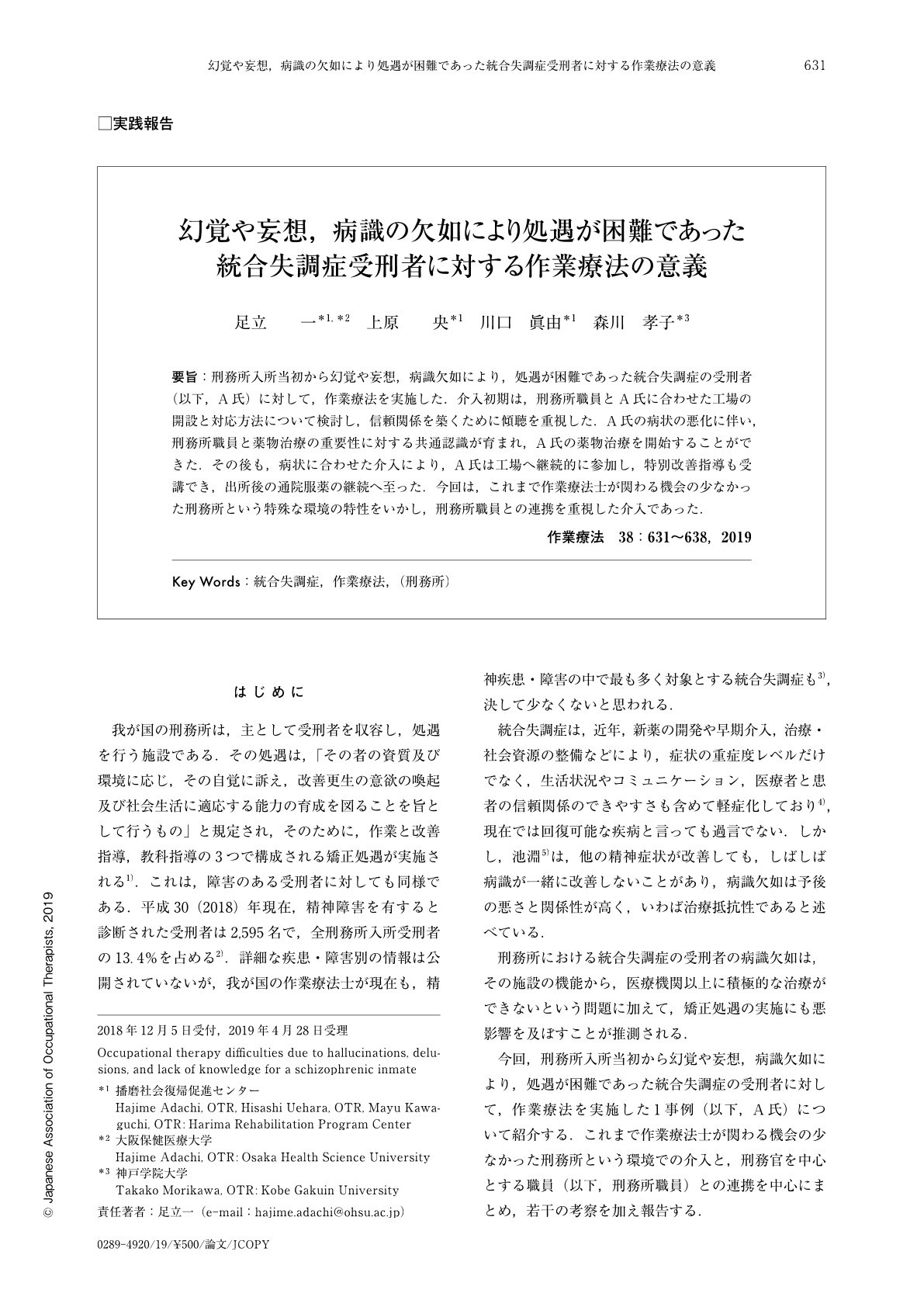Japanese
English
- 販売していません
- Abstract 文献概要
- 1ページ目 Look Inside
- 参考文献 Reference
- サイト内被引用 Cited by
要旨:刑務所入所当初から幻覚や妄想,病識欠如により,処遇が困難であった統合失調症の受刑者(以下,A氏)に対して,作業療法を実施した.介入初期は,刑務所職員とA氏に合わせた工場の開設と対応方法について検討し,信頼関係を築くために傾聴を重視した.A氏の病状の悪化に伴い,刑務所職員と薬物治療の重要性に対する共通認識が育まれ,A氏の薬物治療を開始することができた.その後も,病状に合わせた介入により,A氏は工場へ継続的に参加し,特別改善指導も受講でき,出所後の通院服薬の継続へ至った.今回は,これまで作業療法士が関わる機会の少なかった刑務所という特殊な環境の特性をいかし,刑務所職員との連携を重視した介入であった.
Occupational therapy was applied under adverse circumstances to a schizophrenic inmate suffering from hallucinations, delusions, and other symptoms of mental illness upon entering prison. Early stages of occupational therapy involved active listening to prison staff in order to build a relationship of trust, which resulted in opening a factory and developing a tailored OT regime involving both prison staff and prisoners. As the client's medical condition worsened, a mutual understanding between the prison staff and the OT was fostered on the importance drug treatment, and drug treatment could commence as a result. After that, the client was able to participate in the plant regularly with the OT intervention matched to his medical condition, and the client also received special improvement instructions. Furthermore, the client was able to continue to take medicine after being released from prison and visiting the hospital. This OT intervention focused on taking advantage of the special prison environment and collaborating with the prison staff, which previously had few opportunities to interact with occupational therapists.

Copyright © 2019, Japanese Association of Occupational Therapists. All rights reserved.


